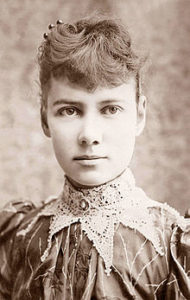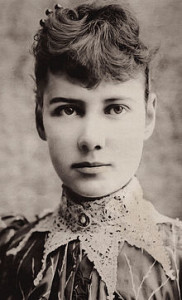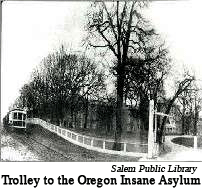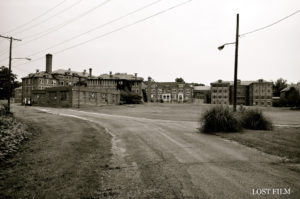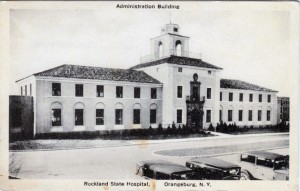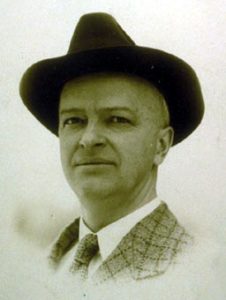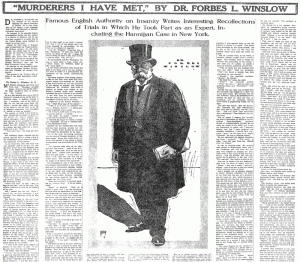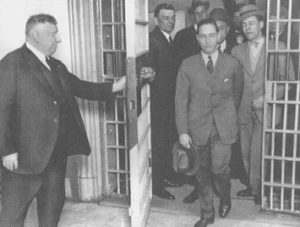Alienists’ assessments of their patients’ mental conditions could be suspect at the best of times. They were particularly suspect when alienists dealt with people who did not fit the norms of an Anglo-centric society. Newly arrived immigrants were vulnerable to a misinterpretation of their mental status, and of course, non-English speaking Native Americans could easily be misunderstood or be so frustrated and frightened that they couldn’t communicate effectively. Continue reading
Category Archives: 1900s newspapers
Not So Undercover
The Canton Asylum for Insane Indians had frequent visitors, who were welcome to tour the facility during visiting hours. (See last two posts about visitors.) When the editor of the Hudsonite showed up unannounced–and not on a visiting day–he was nonetheless welcomed and given a tour by the asylum’s financial clerk, Charles Seely. Continue reading
Undercover Visitors
Though Lunacy Commissions and other visitors who provided oversight to asylums could be misled (see last post), word of actual conditions in an asylum nonetheless leaked out. Sometimes attendants talked, but more often, former patients spoke out against any abusive or inhumane conditions they had endured during their stays. Though these accounts were often dismissed, the public did become curious about conditions in insane asylums and at times speculated wildly about what might actually be happening to patients. At times, newspapers provided on-the-spot reporting by sending someone into an asylum undercover. Continue reading
Asylum Visitors
Though few people wanted to be in an asylum–probably including its staff at times–many people did go to asylums either out of a sense of duty or of curiosity. Bands from a nearby town would often provide music for patients, while other people would offer lectures, magic lantern shows and other entertainments, or conduct religious services. Continue reading
Other Escapes
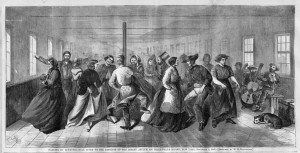
Blackwell’s Island Lunatic Ball, 1865
It is likely that all insane asylums held patients who managed to escape (see last post). These attempts were met with a variety of responses from the community. Especially in the earlier days of asylum-building, the institution’s affiliated city actively worked to bring the asylum in, and the townspeople were quite proud of their magnificent new structure and the asylum’s important work. Continue reading
Children At Crownsville Hospital for the Negro Insane
It seems incredible to think of very young children being committed to insane asylums, but this idea was accepted many years ago. Children with misunderstood conditions (autism, epilepsy, etc.) might exhibit symptoms which seemed to indicate insanity; their parents might then believe that an insane asylum could offer better care than they could. Continue reading
Children in Mental Institutions
Not many patients looked back on their stay at an asylum with any fondness. Unfortunately, horrific experiences were not limited to adults or to the ancient past. One person wrote about his childhood confinement in the Rockland County (NY) Mental Institution: Continue reading
Indefinite Definitions
One of the reasons eugenics laws were so disturbing is because their targets were so loosely defined.
Harry Laughlin’s Model Eugenical Sterilization Law in 1914 spelled out just how nebulous the so-called “undesirable” element of a population could be. He proposed to authorize sterilization of what he called the socially inadequate–and the list of these people was long and frightening. Continue reading
An Important Alienist
Alienists became more important as experts to draw on after psychiatry became more established.
Dr. William A. White, for many years the superintendent of the federal government’s first hospital for the insane, St. Elizabeths, was an especially important figure.
His book, Outlines of Psychiatry, became a classic in its field and was used as a textbook for many years. Continue reading
Insanity Defense Becomes More Common
Though President Garfield’s assassin, Guiteau, did not save his life based on an insanity defense, the plea became more common.
In 1924, Dr. William A. White, superintendent of St. Elizabeths Hospital for the Insane, testified in another sensational insanity-plea trial: that of Nathan Leopold and Richard Loeb for the kidnapping and murder of a fourteen-year-old boy named Robert Franks. Continue reading
